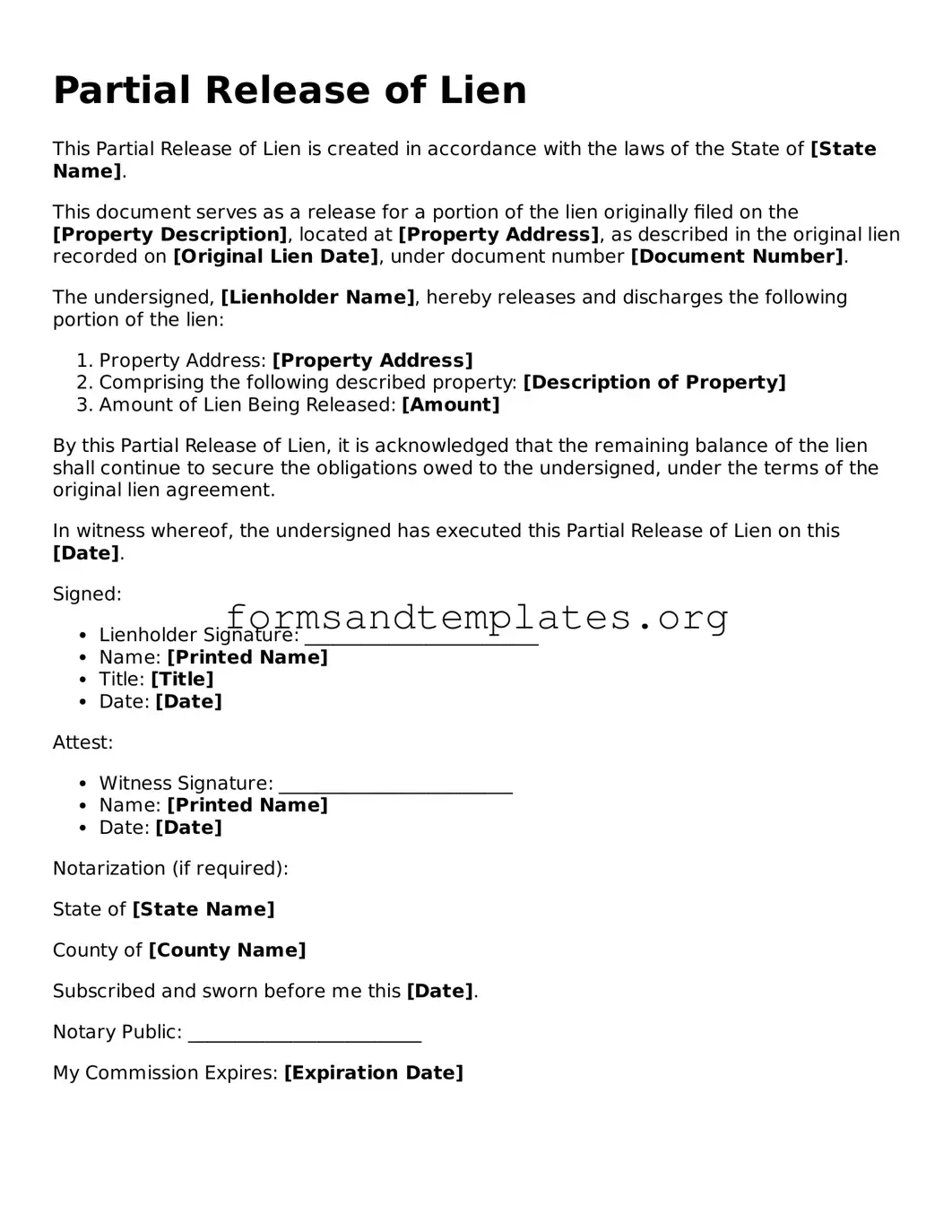Attorney-Verified Partial Release of Lien Template
The Partial Release of Lien form is a legal document that allows a property owner to remove a lien from a specific portion of their property while retaining the lien on the remaining portions. This form is commonly used in construction and real estate transactions to ensure that contractors or suppliers are compensated for their work without encumbering the entire property. Understanding how to properly fill out this form is essential for maintaining clear property titles and facilitating smooth transactions.
To learn more and fill out the form, click the button below.
Access Editor Here
